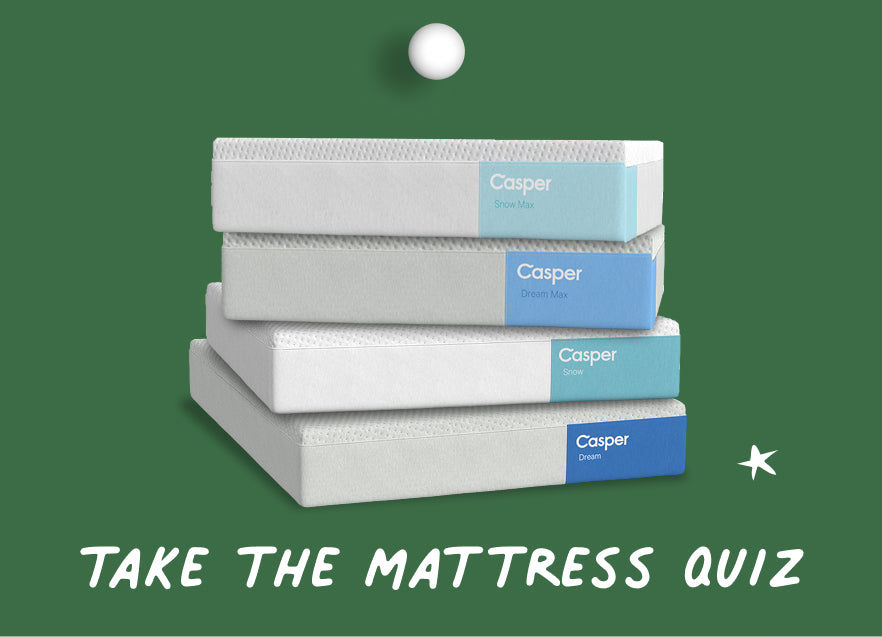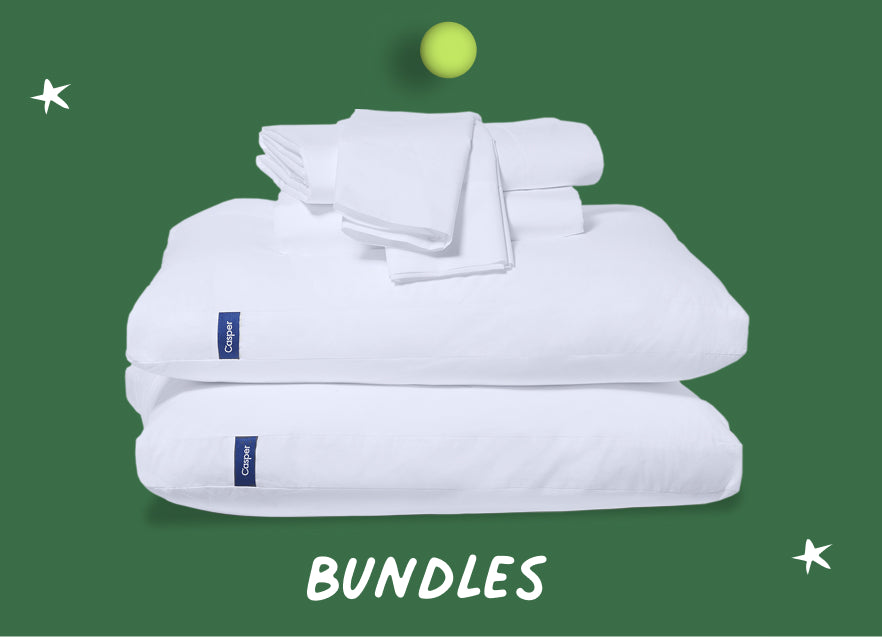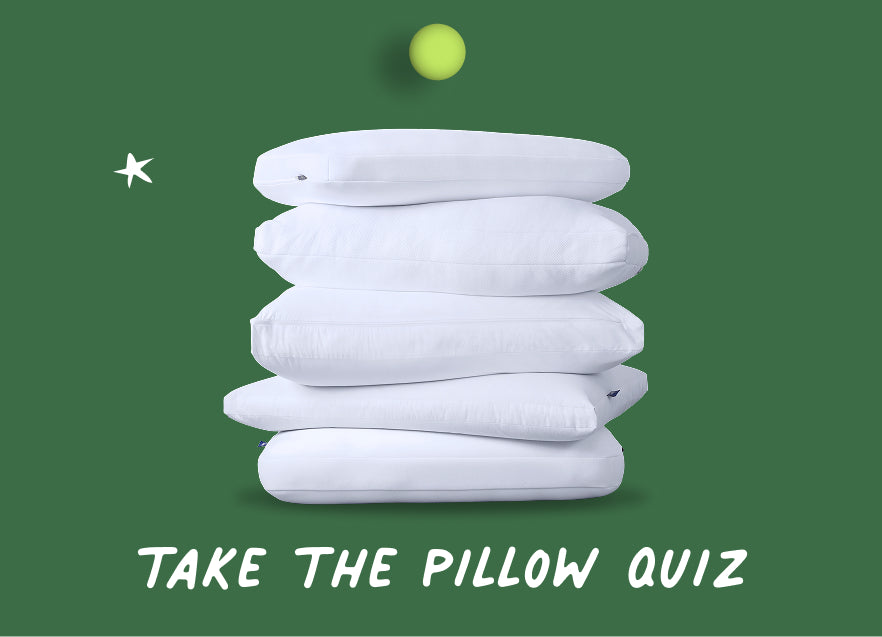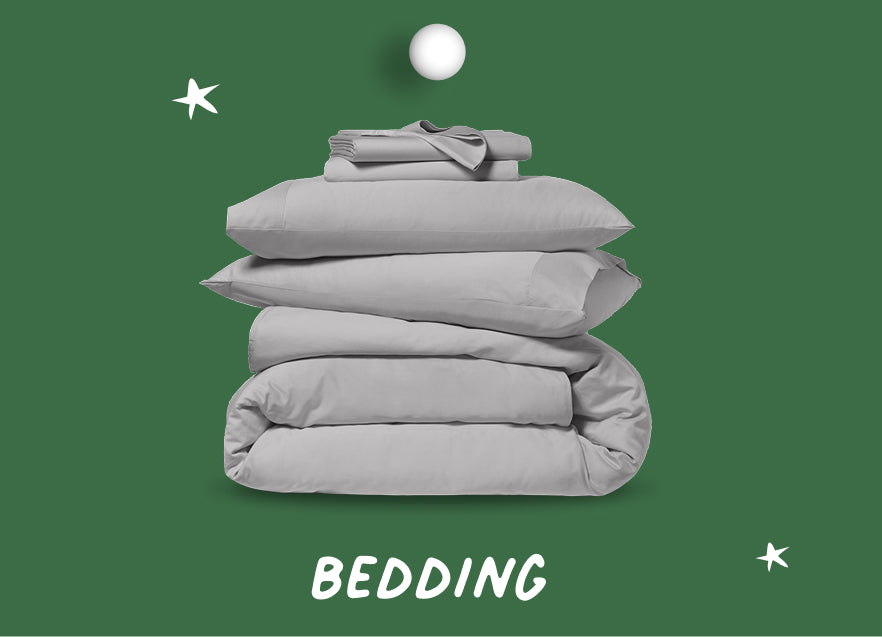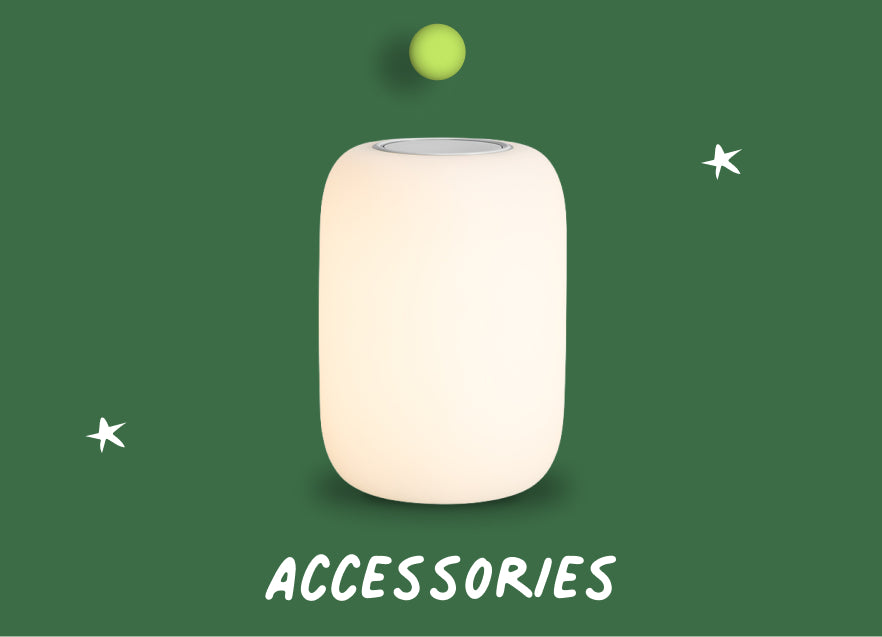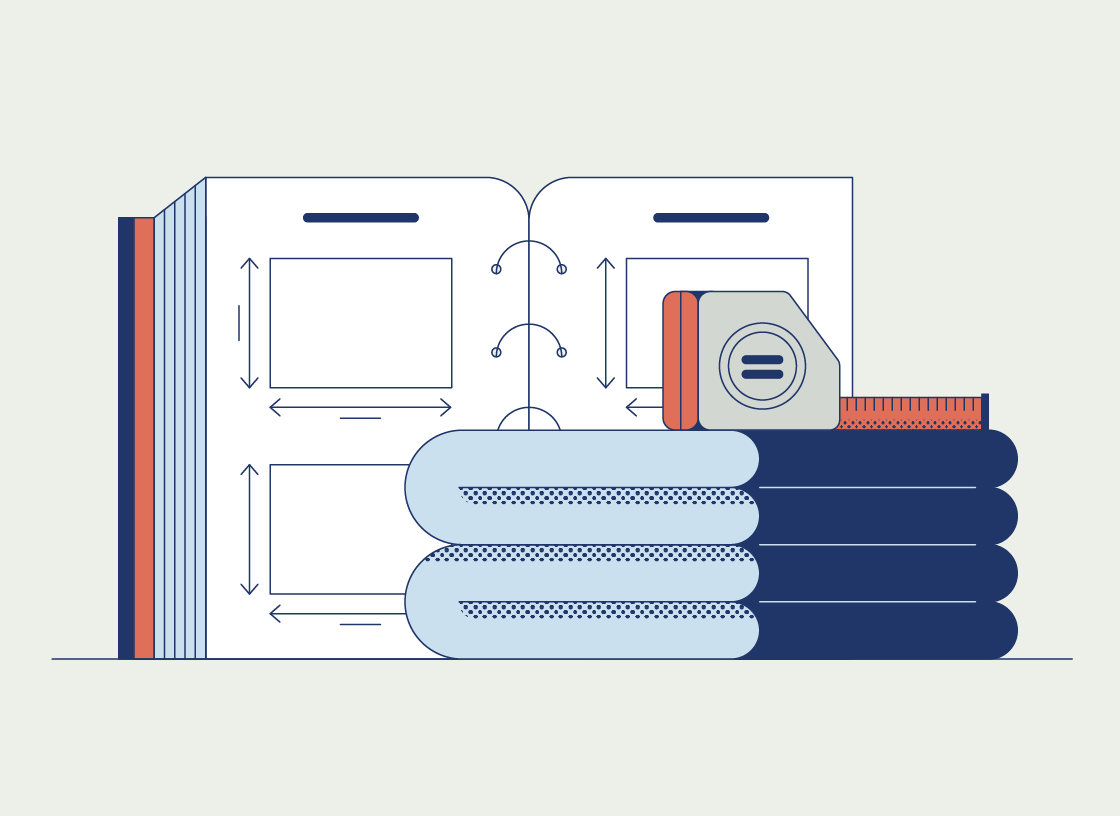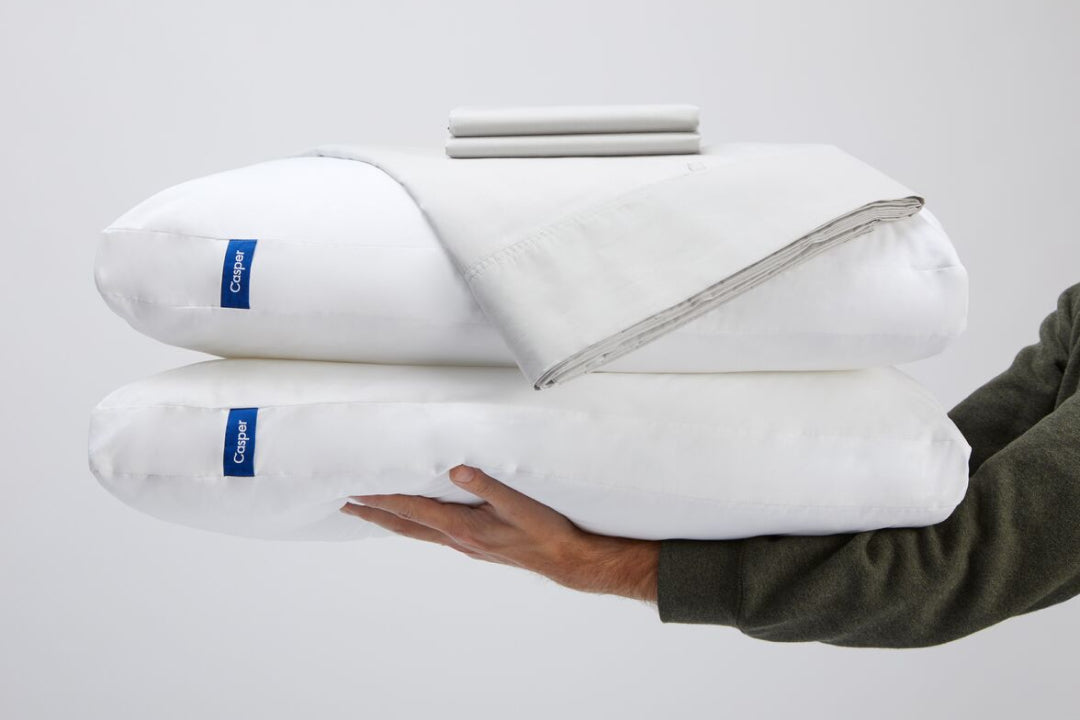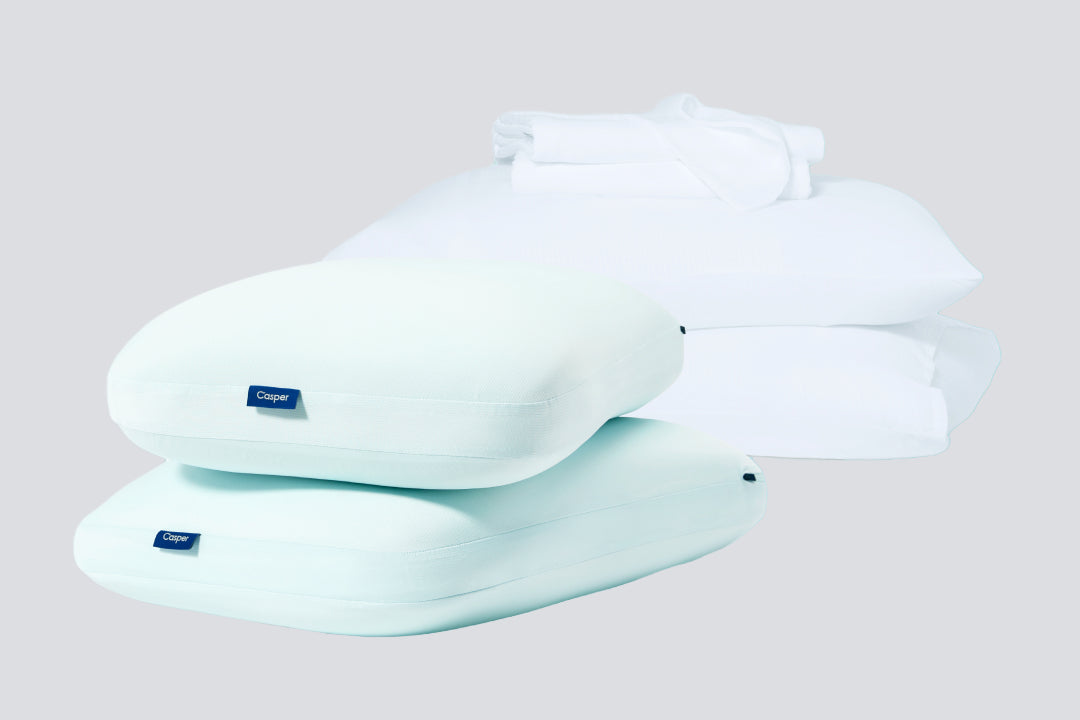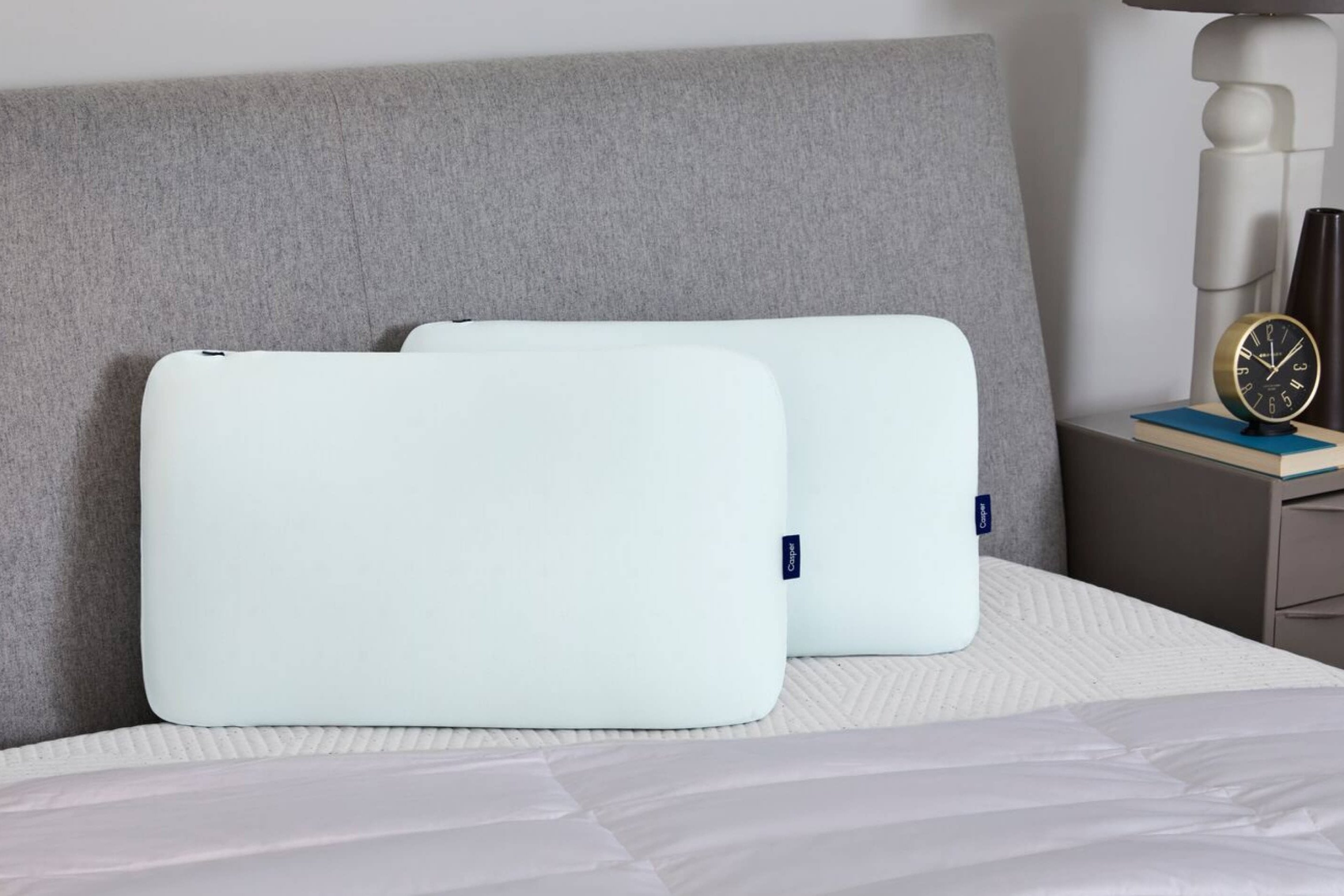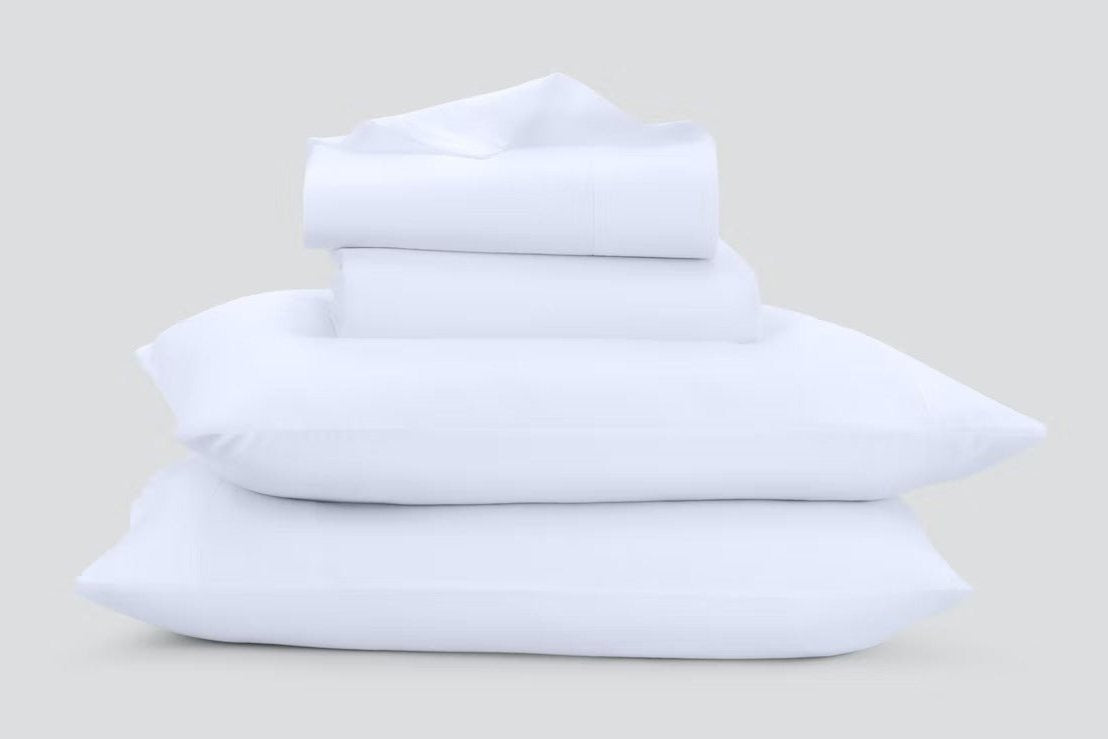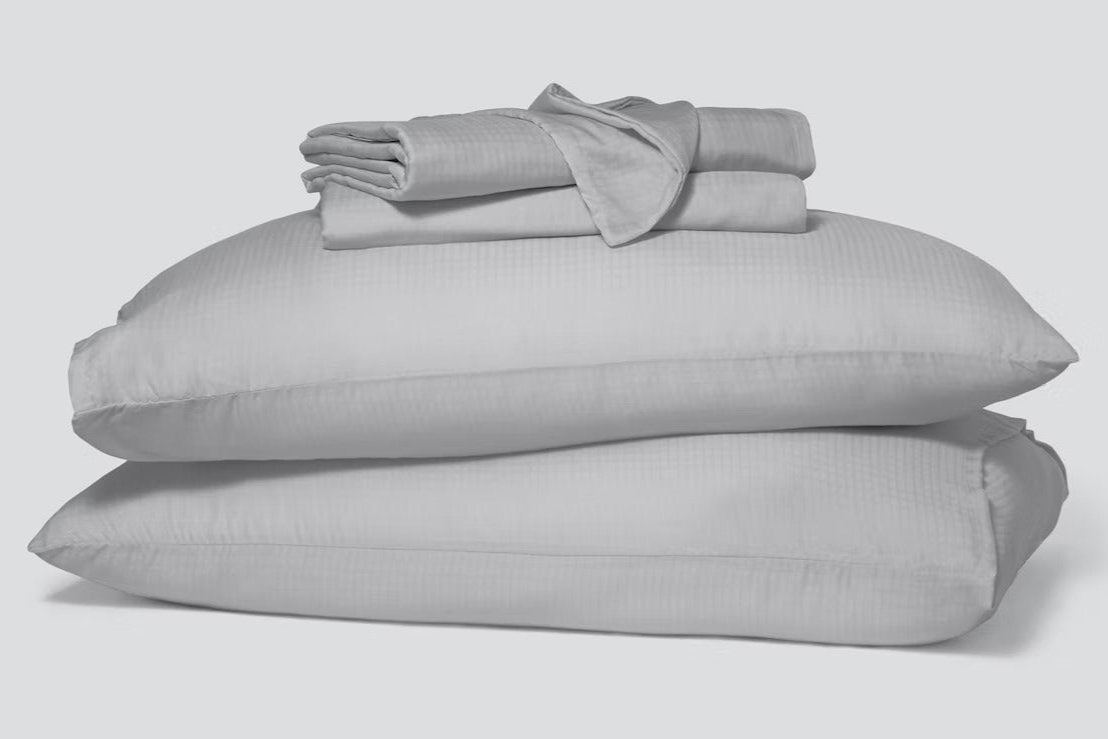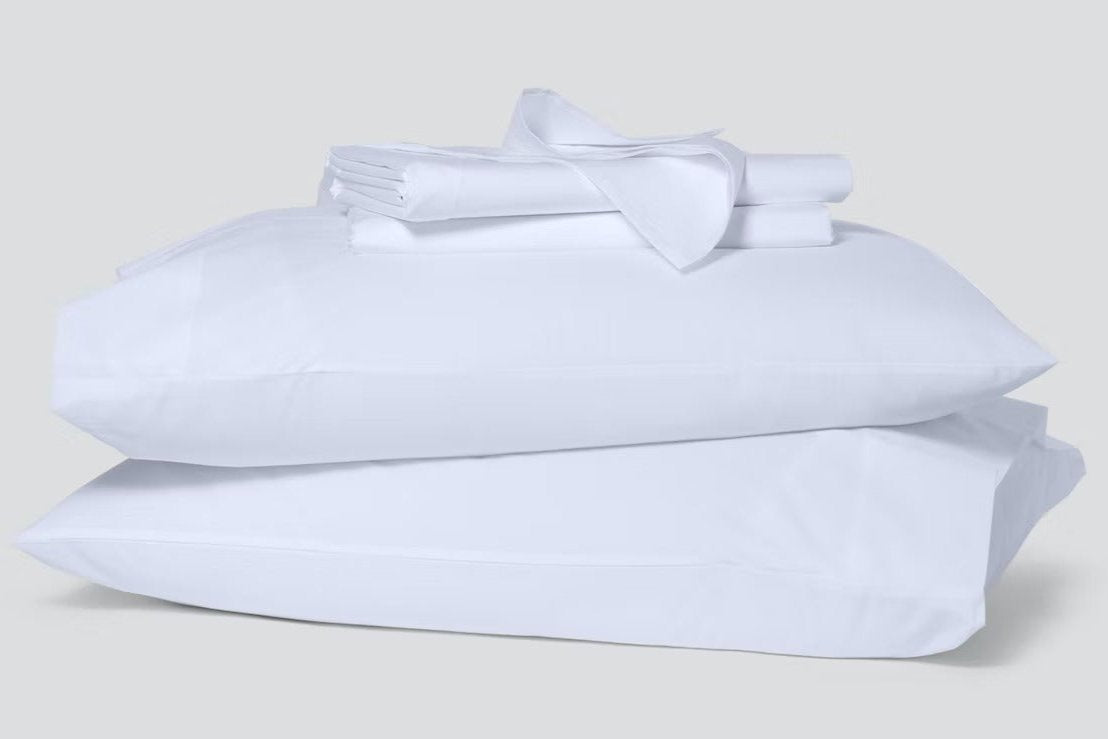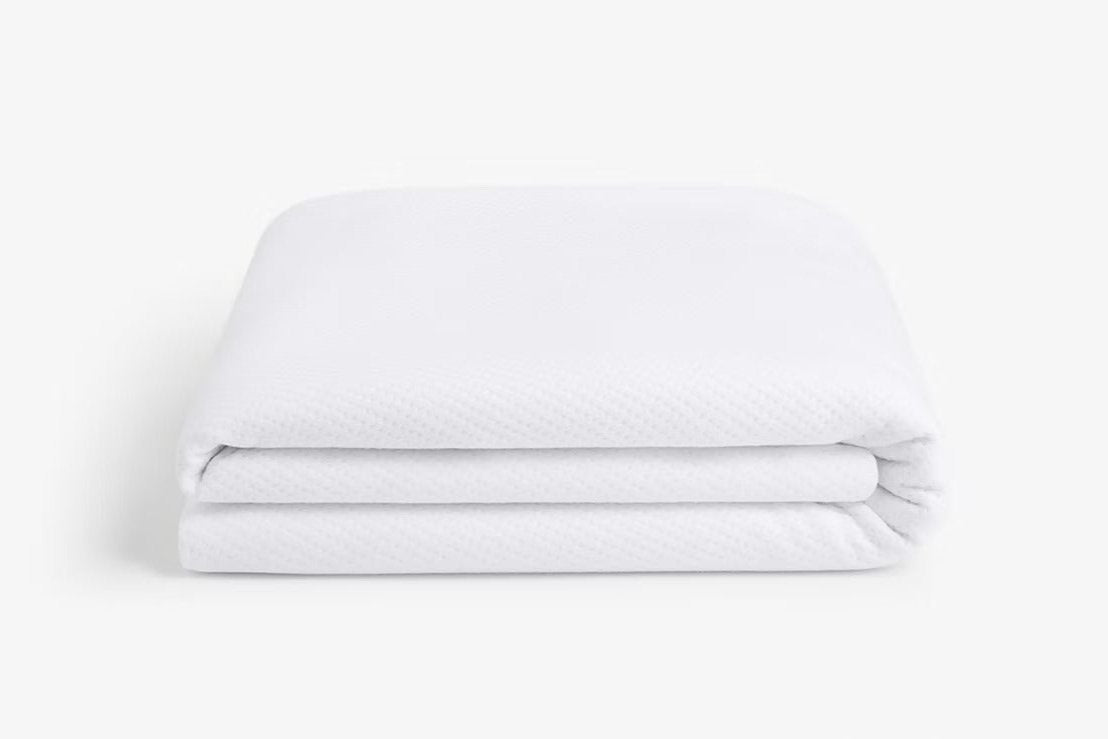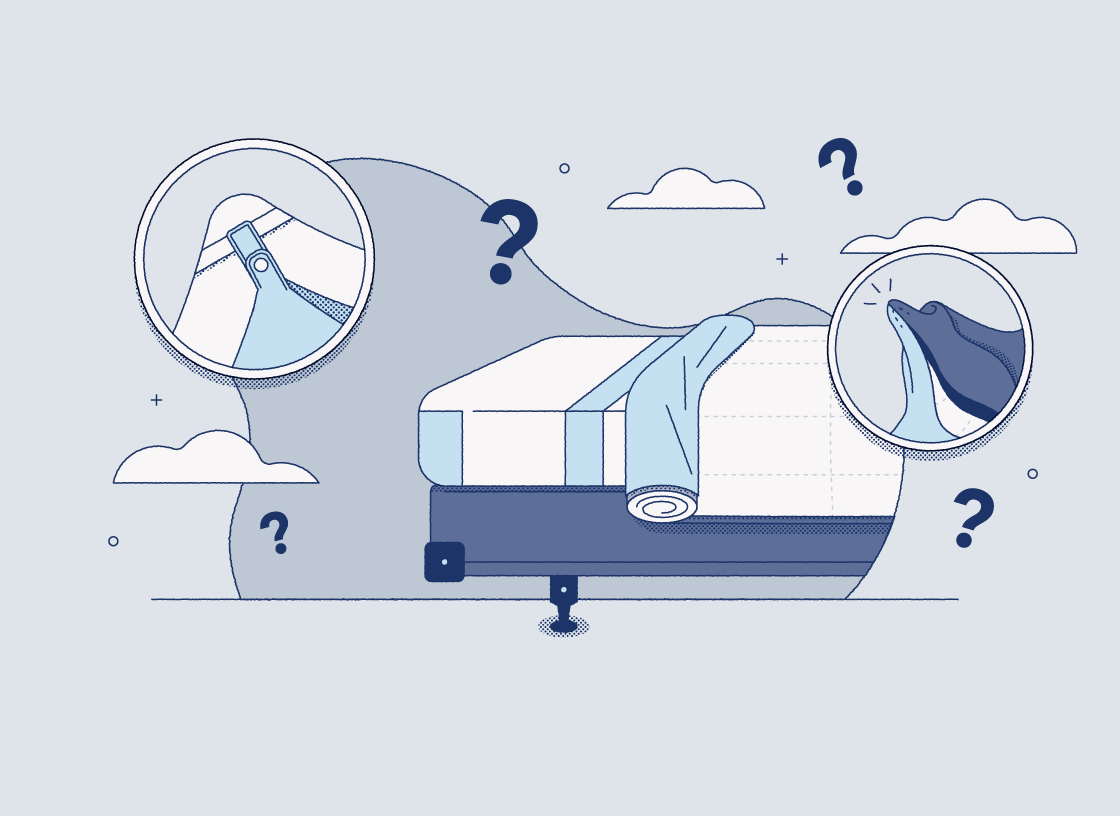Updated 11/10/2025
You’ve fit two corners of the bed sheet over your mattress and tucked them neatly underneath its weight, perhaps even safeguarding it with a mattress protector. Now you have to finagle the final two. Even when using all your strength and trying to get them to stretch far enough, the sheets don’t fit. You bought the wrong bedding size. Luckily, this problem is easily solved. If you’re shopping for a new bedding set, there are classic bed sheet sizes you can reference. Shopping second-hand? You can quickly measure the sheets to be sure they will fit. Our guide breaks down the different bed sizes and the best sheet sizes for any bed, ensuring a good fit for anything from a twin bed to a California king bed.
Bed Sheet Sizes Chart
Don’t let the wrong sheet size lead to a restless night of sleep. Here are common mattress sizes and their accompanying sheet pairings.
| Size | Mattress size (in) |
Mattress size (cm) |
Fitted sheet size |
Flat sheet size |
Duvet cover size |
|---|---|---|---|---|---|
| Twin | 38” x 75” | 96.5 x 190.5 cm | Twin | Twin | Twin |
| Twin XL | 38” x 80” | 96.5 x 203 cm | Twin XL | Twin, Twin XL |
Twin |
| Full | 53” x 75” | 134.5 x 190.5 cm | Full | Full, Queen | Full, Queen |
| Queen | 60” x 80” | 152.5 x 203 cm | Queen | Queen | Queen |
| King | 76” x 80” | 193 x 203 cm | King | King, Cal-King |
King, Cal-King |
| California King |
72” x 84” | 183 x 213 cm | Cal-King | King, Cal-King |
King, Cal-King |
The above chart will help you determine what sheet sizes fit each classic mattress size. If you have a less common mattress size or additional mattress toppers, you may need to determine the right size based on your specific measurements.
Below we list the dimensions for each sheet size. Keep in mind, Casper sheet sizes may differ slightly from regular bed linen and sheet sizes.
Twin
- Mattress – approximately 38” x 75” or 96.5 x 190.5 cm
- Fitted sheet – approximately 39” x 75” or 99.06 x 190.5 cm
- Flat sheet – approximately 66” x 96” or 168 x 244 cm
- Duvet cover – approximately 72” x 96” or 1823 x 244 cm
- Bed skirt – approximately 38” x 75” or 96.5 x 190.5 cm

The smallest bed size is the twin-size mattress, designed to comfortably hold one sleeper. Twin bedding fits snuggly onto a 38 inch wide and 75 inch long mattress. Depending on the bedding material and brand, the dimensions of the flat sheet and duvet may vary. As long as these sheets are longer and wider than the dimensions of the mattress, you shouldn’t have any issues.
Twin XL
- Mattress – approximately 38” x 80”or 96.5 x 203 cm
- Fitted sheet – approximately 39” x 80” or 99 x 203 cm
- Flat sheet – approximately 66” x 96” or 168 x 244 cm
- Duvet – approximately 72” x 96” or 1823 x 244 cm
- Bed skirt – approximately 38” x 80” or 96.5 x 203 cm

Commonly found in college dorms, the twin XL mattress is slightly longer than the twin. This means that if you’re headed off to college, you’ll likely need to buy a new set of twin XL fitted sheets. These fitted sheets are typically 39 inches wide and 80 inches long. Their flat sheet counterparts are usually 66 inches wide and 96 inches long.
Full
- Mattress – approximately 53” x 75” or 134.5 x 190.5 cm
- Fitted sheet – approximately 54” x 75” or 137 x 190.5 cm
- Flat sheet – approximately 96” x 102” or 244 x 259 cm
- Duvet cover – approximately 93” x 96” or 236 x 244 cm
- Bed skirt – approximately 53” x 75” or 134.5 x 190.5 cm

Many apartment dwellers choose a full size mattress (also called a double bed) because it’s big enough to sleep comfortably, but doesn’t take up the whole room. Full-sized mattresses are also great for guest bedroom ideas. If you’re buying full size sheets, be sure that the fitted sheets are the correct size.
Full size fitted sheets are typically 54 inches wide and 75 inches long. The full size flat sheet is the same measurement as a queen, at 96 inches by 102 inches. A full size duvet is also the same size as a queen duvet, measuring 93 inches wide and 96 inches long.
Queen
- Mattress – approximately 60” x 80” or 152.5 x 203 cm
- Fitted sheet – approximately 60” x 80” or 152.5 x 203 cm
- Flat sheet – approximately 96” x 102” or 244 x 259 cm
- Duvet cover – approximately 93” x 96” or 236 x 244 cm
- Bed skirt – approximately 60” x 80” or 152.5 x 203 cm

Queen mattresses are the most common mattress size and one of the best mattress sizes for couples, as they are not too big or too small. Couples or individuals who like having some extra room will outfit their room with a queen mattress. If you need to purchase queen sheets, you’ll need to be aware of queen bedding size measurements. Queen size fitted sheets are typically 60 inches wide and 80 inches long. The queen size flat sheet is approximately 96 inches wide and 102 inches long.
Are There Different Sized Queen Sheets?
While most queen-sized mattresses are 60 inches wide and 80 inches long, there are some variations to regular queens, offering various queen bedding size options.
A half queen is a specialty mattress that’s 30 inches wide and 80 inches long. Typically, people have two half-queen mattresses so they can adjust each side to the person’s comfort level. For this type of mattress, you’ll need to buy specialty half-queen fitted sheets. You can use the classic queen size for flat sheets and duvet covers.
A California queen bed is typically 60 inches wide and 84 inches long. For this specialty size, you’ll need to find fitted sheets that are 60 inches by 84 inches. The flat sheets and duvet cover can be the classic queen size.
King
- Mattress – approximately 76” x 80” or 193 x 203 cm
- Fitted sheet – approximately 76” x 80” or 193 x 203 cm
- Flat sheet – approximately 102” x 112” or 259 x 284 cm
- Duvet cover – approximately 96” x 109” or 244 x 277 cm
- Bed skirt – approximately 76” x 80” or 193 x 203 cm

Perfect for cozying up with your significant other, pet, and little one, the king mattress is 76 inches wide and 80 inches long. Fitted king sheets should fit snugly, so they are approximately the same size. The king size flat sheets are typically a little larger, at 102 inches wide by 112 inches long. A king duvet covers the king bed, with its cover sheet measuring 96 inches wide and 109 inches long.
California King
- Mattress – approximately 72” x 84” or 183 x 213 cm
- Fitted sheet – approximately 72” x 84” or 183 x 213 cm
- Flat sheet – approximately 102” x 112” or 259 x 284 cm
- Duvet cover – approximately 96” x 109” or 244 x 277 cm
- Bed skirt – approximately 72” x 84” or 183 x 213 cm

The luxurious California king mattress is 72 inches wide and 84 inches long. A California king bed fitted sheet should be the same size. The flat sheet can be the same as a king size, 102 inches wide by 112 inches long. The duvet can also have the same measurements as a king, at 96 inches by 109 inches.
Types of Sheets
Don’t know the difference between a fitted sheet and a flat one? Here’s a quick guide on the types of sheets you’ll encounter when shopping for bedding.

Fitted Sheets
A fitted sheet is designed to fit perfectly onto your mattress. It typically has elastic in the corners to help the sheet grip onto the mattress.
Fitted sheets need to be specifically sized to complement the mattress dimensions. If the fitted sheet is too big, the sheet will fall off. If it’s too small, you’ll have trouble getting the elastic over the mattress corners.
Look for deep pocket sheets in your fitted bed sheet search to prevent it from slipping off your mattress. They’re perfect for if you have a mattress pad or topper that adds extra height to your bed.
Flat Bed Sheets
As the name suggests, flat bed sheets are meant to lie flat on the mattress. They should be larger than the mattress surface. The extra fabric that hangs over the sides is then tucked under the mattress.
Duvet
What is a duvet, exactly? Not to be confused with a comforter, a duvet is a thick blanket that’s filled with down, feathers, wool, silk, or synthetic material. Duvets require a duvet cover sheet that you can take off to clean. This bed linen lies on top of the bed and drapes slightly over the edge of the mattress.
Bed Skirt
Lastly, a bed skirt is a fabric that wraps around the bottom of the mattress. It’s designed to hide the space between the mattress and the floor. This allows you to cover the boxspring and any items that are hiding underneath your bed in storage.
What About Pillowcases?
While not necessarily categorized as a type of bed sheet, pillowcases are still an essential element of bedding and oftentimes will be included in sheet sets. We've written extensively about pillowcases in our pillowcase sizes and dimensions guide, but the following pillowcase sizes are most common:
-
Standard Pillowcase: 20" x 26"
-
King Pillowcase: 20" x 36"
How Do You Measure a Fitted Sheet?
If you’re still unsure if a fitted sheet will fit your mattress, you can easily measure it and find out.

Remove any sheets from your bed and measure the width and length of your mattress. Then measure the height of your mattress, being sure to include any mattress toppers. Write these dimensions down. Your fitted sheet should match or be slightly larger than these dimensions.
Next, measure your fitted sheet. Lay the sheet out to find which side is the length (the longer side). Measure from one corner to the other to find the length measurement. Then measure the shorter side, from corner to corner. This is the width. Lastly, take your fitted sheet and measure along the pocket seam. This will tell you the height.
If these measurements are equal to or slightly larger than your mattress measurement, the fitted sheet should fit. If they are much larger, the sheet might bunch up in the night and come off. If they are smaller, the sheet will not fit.
What to Consider Before Buying the Right Size Sheets
To make sure you aren’t left with the disappointment of the wrong size sheet, here are a couple of additional items to keep in mind.
Mattress Depth
Many people want extra support or cushion on their mattress. If you add a topper for extra cushion or support, it increases total mattress height. Measure the combined depth before buying fitted sheets: standard fitted sheets typically fit up to 12", while deep-pocket styles accommodate mattresses up to 18".
Material and Weave
Sheets aren’t one-size-feels-the-same. Before you make your choice, compare common sheet materials, like percale vs sateen sheets or linen vs cotton sheets. Percale stays cool and crisp, while sateen offers a smoother, silkier touch. Linen is breathable and perfect for warmer nights, while cotton delivers soft, breathable comfort with easy care and year-round versatility. Think about how you like to sleep—cozy and warm or light and breezy—and pick a weave that fits your needs.
Cleaning Considerations
When you get sheets, the first thing you should do is wash them. Sheets may have been in contact with chemicals in production and transportation, so it’s important to wash them. However, it’s essential that you follow the washing instructions on the label. If your sheets shrink, they probably won’t fit your mattress anymore. Learn more about how to wash your sheets properly in our blog.
Shopping for the Right Sheets
Now that you know everything about bed sheet sizes, you can purchase bedding confidently and know that it will fit perfectly onto your mattress, ensuring a snug fit on the bed frame. You’ll be snug in your new sheets in no time. Consider these options from Casper:
- Percale Sheet Set: Crisp & cool 100% organic cotton percale (300 thread count); breathable, durable, and gets softer with every wash.
- SuperSoft Sheet Set: 100% brushed cotton with t-shirt-like coziness—soft, snuggly feel in a lightweight build.
-
Hyperlite Cooling Sheet Set: 100% TENCEL™ Lyocell; unique grid weave boosts airflow to help hot sleepers stay comfortably cool.
Sleep Better with Casper
Selecting the right bed sheets is more than just about aesthetics—it's about ensuring a perfect fit for your mattress to guarantee a restful night’s sleep. Whether you're replacing worn-out linens or upgrading to a new bed size, knowing the correct dimensions and types of bedding ensures you avoid the frustration of ill-fitting sheets.
At Casper, we believe in creating bedding that complements your mattress perfectly, offering a blend of comfort, durability, and style. Our sheet sets are thoughtfully designed to fit a variety of mattress sizes, ensuring a snug fit every time. Plus, with options crafted from high-quality materials like breathable cotton and silky Tencel™, you can complete your sleep sanctuary with ease. Top off your dreamy oasis with a calming weighted blanket that’s designed for the ultimate relaxation. Explore our collection today and experience the difference that well-fitting, expertly made sheets can bring to your sleep routine.
FAQs About Bed Sheets
How do I pick sheets for nontraditional mattress sizes?
Measure first—nontraditional beds don’t follow standard sheet charts. For example, an Olympic queen runs about 66" x 80" (wider than a standard queen), while an Alaskan king is a massive 108" x 108". Specialty sheet makers often carry these sizes, or you can size up and tuck if exact fits are hard to find.
What’s the difference between a bed sheet and a bedspread?
Sheets are the layers you sleep directly on or under—fitted sheets hug your mattress, flat sheets cover you. A bedspread is a decorative, topmost layer that covers the entire bed, often all the way to the floor. Think of sheets as the comfort players in your sleep setup, and a bedspread as the finishing touch.
How often should you wash your sheets?
You may have picked the right bedding, but how often should you change your sheets to get the most out of your purchase? Most experts recommend washing sheets once a week. That’s often enough to clear away sweat, skin cells, and allergens that build up while you sleep. If you share your bed, sleep hot, or have allergies, you may want to wash more frequently. Rotating between a couple of sheet sets makes it easier to keep things fresh.

